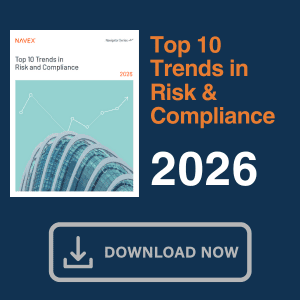COVID-19 eroded gender equality in many sectors, industries and regions. Leaders now have a responsibility to reverse this trend. It’s going to require a combination of extrinsic and intrinsic pressure to make that happen.
The past year has been marked by significant disruption, with effects felt far and wide. Gender equality has taken a step forward in the 21st century, but the coronavirus pandemic pushed some workforces two steps back.
In analyzing the findings of The Gender Equality Dilemma, our fourth annual global report on gender representation, when it comes to gender equality, we have seen some small examples of progress. There is a clearer recognition of the value of women in leadership, exemplified by Jacinda Ardern’s confident governance of New Zealand through the pandemic. But at the same time, the World Economic Forum has issued a stark warning: At this rate, it will take another 100 years to achieve gender equality.
Our recent study finds that, across the nine countries we analyzed, representation of women averages still only 32 percent in public and private sectors. France and South Africa rank highest, but neither have reached a 50 percent parity. Their gains can be attributed, in part, to public commitments and government legislation. For example, in 2017, President Macron made a strong commitment to gender equality, with legislation requiring at least three women board members per company. In 2019, laws were introduced to eliminate pay gaps, drawing on salary raises, promotion rates and, from 2021, public reporting on corporate websites. But despite this progress, we find that these efforts have been dwarfed by the far-reaching impact of the global pandemic.
The Pandemic Is Driving a “She-cession”
The global pandemic has reversed gender equality in the workforce. Women represent 39 percent of the global workforce but, overall, fared worse in terms of job losses, according to several sources tracking employment in the U.S. and globally.
According to a February 2021 report from the Center for American Progress, “When Women Lose All the Jobs: Essential Actions for a Gender-Equitable Recovery,” during the COVID-19 recession, the female workforce lost a net of 5.4 million jobs during the recession, accounting for almost 1 million more than men.
In a January 2021 report titled “ILO Monitor: COVID-19 and the world of work,” the International Labour Organization found women worldwide were more affected by job loss than men, with employment loss standing at 5 percent for women compared to 3.9 percent for men.
Moreover, two in five working mothers have reduced, or are considering reducing, commitments at work, according to a Financial Times survey issued in February of this year. The proportion of fathers expecting to reduce their workload, meanwhile, is 10 percent lower.
So why are women disproportionately affected? First, the burden of care falls predominantly on women, directly competing with their ability to operate in the workplace. In addition, the sectors most impacted by the pandemic tend to be dominated by women (e.g., hospitality and food service). This situation is exacerbated for women of color, who dominate the service sectors in countries including the United States. In addition, the topic of gender equality has become less of a priority for many companies as they grapple with the fallout of the global crisis.
What holds women back? The answer often goes back to deep-seated beliefs about gender equality and societal norms, is compounded by workplace culture and gets amplified further by a lack of women role models in leadership positions. Added to this, women are not as well-represented in positions of power. Advancing gender equality requires the dominant group (currently mostly men) to use its power, influence and privilege to engage and create change. Too often, the burden for driving change and equality is placed on the shoulders of underrepresented, marginalized groups.
Leaders Can Halt a Backslide in Gender Equality, But How Do We Motivate Them?
Business leaders are in a unique position to make small but meaningful adjustments, using their platform, power and resources to reverse this backslide in gender equality. Tapping into leaders’ motivation and values can help influence and shift the mindsets of those in positions of power.
What drives motivation? Extrinsic motivation emanates from external sources, including stakeholder pressure, public pledges and commitments (e.g., as promoted by CEO Action for Diversity & Inclusion), imposed quotas and transparent reporting. But these can only take a leader so far, and it can be difficult to sustain momentum. Intrinsic motivation comes from within and drives a leader to learn, grow and take action. It sustains their interest and commitment over time. In many cases, intrinsic motivation drives the best outcomes. We can tap into leaders’ intrinsic motivation by helping them understand why gender equality matters and capitalize on their desire to be part of something important and larger than themselves.
We can also encourage leaders to create more diverse, equitable and inclusive workplaces by linking gender equality to leaders’ values, thus guiding behaviors. Connecting gender equality, diversity, equity and inclusion outcomes to business results, as well as to personal and professional success, is critical. Forward-thinking leaders are interested in engaging in challenges and goals that have a personal meaning, have the potential to build their legacy and have an adjacency that helps them feel connected with the cause. We can highlight the ways leaders’ behaviors in support of gender equality have a broader impact on other people and on workplace culture.
What about quotas? Quotas do work, and we see more women on boards where quotas are in place. But quotas are not a panacea and do not engender a ripple effect, as hoped. In 2005, Norway announced a 40 percent quota for women on boards. This was reached in 2008. Given the relatively low number of women on boards at the turn of the century (5 percent in 2001), there was concern that “golden skirts” would sit on multiple boards. However, this has not materialized, with 85 percent of women board members only serving on one board. Quotas remain controversial and can be viewed as unpopular or unjust. They can also fail to address underlying discrimination, systemic barriers and workplace culture. This is, in part, why we have not seen a trickle-down effect leading to a significant increase in women leaders in organizations.
Driving Change in Organizations
These five aims are paramount:
- Take the lead by making public commitments and announcing aspirations in a bid to generate positive, public pressure. A rising tide lifts all boats; raise the bar and put pressure on your competitors to follow suit.
- Include the dominant group (currently men) in conversations about gender equality, and engage them in creating more diverse, equitable and inclusive workplaces.
- Change the system and remove barriers. Audit processes to remove systemic barriers and monitor outcomes. Establish equitable policies and programs to provide visibility and opportunity for all.
- Hire and promote more women into leadership positions and “fix the leaky pipeline.”
- Recognize women’s “lived experiences” are not identical. Understand the impact of intersectionality and having multiple marginalized identities.



 Beth Sehgal is Global Director of Diversity and Inclusion at
Beth Sehgal is Global Director of Diversity and Inclusion at 






